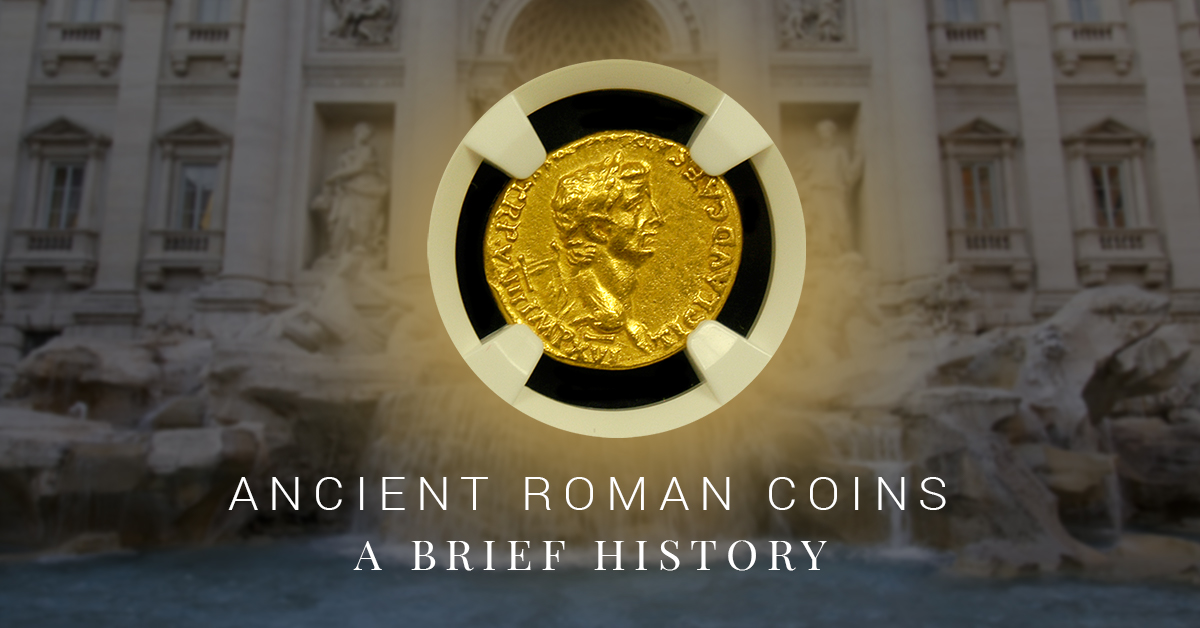A Brief History of Ancient Roman Coins

One of the most popular kinds of coins that collectors go after is Roman Empire coins. It’s no wonder, considering the Roman Empire at its height, controlled the majority of Europe, along with parts of Asia and Africa. Roads were built that were thousands of miles long, indoor plumbing was used by aqueducts, and Roman coins were found all across the “known world.”
They weren’t the first civilization to use coins as a means of money. While the Romans began using coins in approximately 300 BC, the Greeks had beaten them to it by over three hundred years. However, the Roman Empire adopted many of the aspects of Greek life and culture, and proceeded to remix it in its own way. Money was just one more way the Romans did that.
Julius Caesar was the first Emperor that decided to have his own face appear upon coinage. First, it was a way to help to portray him as a living god, a habit that other Emperors eagerly adopted. By spreading his image throughout the territories held by Rome, it helped to push the idea that the Emperor was an omnipotent figure that had eyes everywhere. Also, most of the subjects of the Empire would never walk the streets of Rome or look upon the face of the Emperor. However, they still needed to be introduced to their rulers and reminded about who was ultimately in control. Along with economic reasons, coins helped to act as effective propaganda.
While the Romans weren’t necessarily the first to make use of coins, they were absolutely one of the first to devalue their money. Around the third century AD, the Empire had overextended itself. It spent massive amounts by maintaining a military force, holding vast amounts of territory, and providing an enormous infrastructure program with the roads. Economic catastrophe struck along with military disasters. As a result, it became more difficult to obtain gold, which was used to craft the gold Aureus, and silver, which was used to make the silver Denarius.
Over time, the might of the Empire declined, and with it, its monetary value. Slowly and inevitably, the silver purity value of the Denarius dropped. The Emperor Septimus Severus commanded a notable reduction. Eventually, the purity dropped so low that the Denarius was made from hardly any silver at all. The monetary reform of Aurelian in the year 274 slowed down the disaster somewhat, as did as another reform by Diocletian.
But the damage had already been done. Rome needed a constant influx of precious metals like silver and gold to pay for not only the upkeep of the Empire, but to also afford the continuous wars and skirmishes taking place all around its territory. Rome’s economists believed that by decreasing the amounts of gold and silver used to mint coins, they could stretch their budgets further. Eventually, the Empire collapsed, and the strong hand of Rome released its subjects. Now theRoman Empire stands as a warning to more modern countries and conquerors, and its coins bear witness to its fall.







